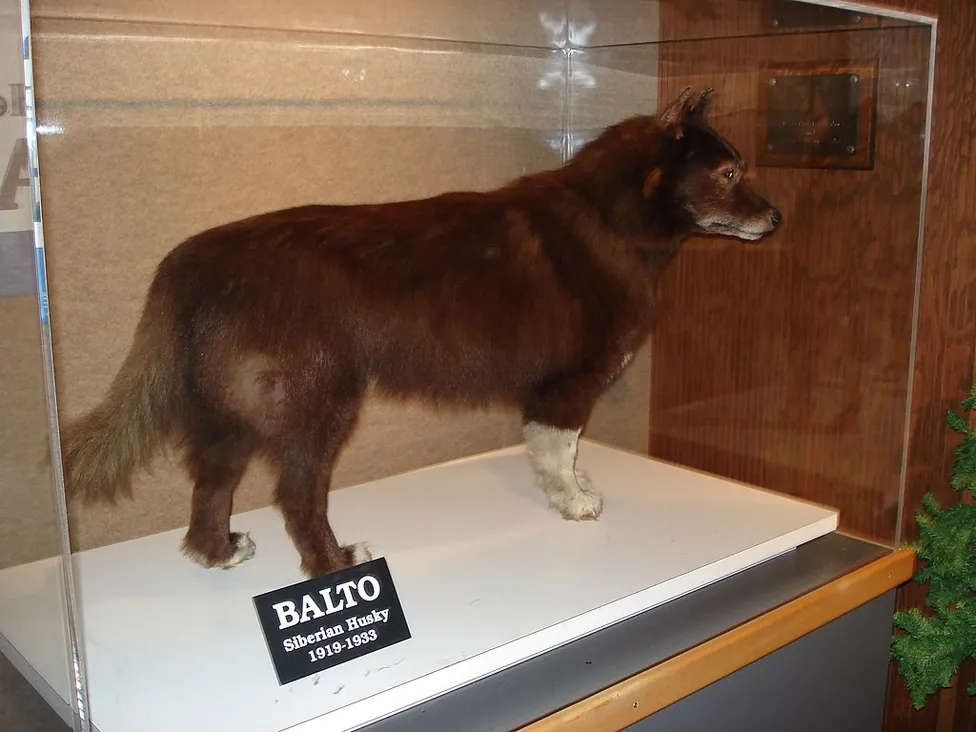Geneticists sequenced the DNA of Balto, the famous sled dog who helped an Alaskan community from a diphtheria outbreak.

Research Paper
Katherine L. Moon et al., Comparative genomics of Balto, a famous historic dog, captures lost diversity of 1920s sled dogs. Science. 380, (2023).In 1925, the remote Alaskan town of Nome was struck by a diphtheria outbreak. The only thing that could save the community was a lifesaving diphtheria antitoxin. Due to extreme weather in the Alaskan arctic winter, the only way to bring the antitoxin was via sled dogs. Balto, a lead sled dog along with his handler Gunnar Kaasen and his team of dogs did exactly that. They saved the entire community and Balto was a hero.
Balto was commemorated with a film and a statue was dedicated to him in New York City’s Central Park. Balto also became the face of all media and was congratulated for his courage and dedication. Today, Balto is helping scientists again.
Scientists used the preserved remains of Balto to extract his DNA and sequence it. They extracted DNA from just a small piece of his underbelly skin hair. Simultaneously, they also sequenced the DNA from 682 modern day dogs. These were sled dogs, Siberian Huskies and other breeds. In addition, they also sequenced 240 other mammal species. They then compared these DNA sequences to that of Balto’s.

Comparative genomics of DNA sequences from Balto and modern day dogs revealed interesting details. Scientists showed that Balto was more genetically diverse compared to modern day Siberian Huskies. Their analysis revealed that Balto’’’s lineage was genetically healthier and less inbred than modern breeds, with characteristics adapted to the extreme environment of 1920s Alaska.
The researchers found that Balto clusters most closely with Alaskan sled dogs, with a high genetic diversity and a lower burden of potentially damaging genetic variants. He also had substantial ancestral similarity to Siberian huskies, Alaskan malamutes, Greenland sled dogs and outbred dogs from Asia.
This research provides insights into how selection by breeders of dogs can diversify dog genetics in a matter of a century.
